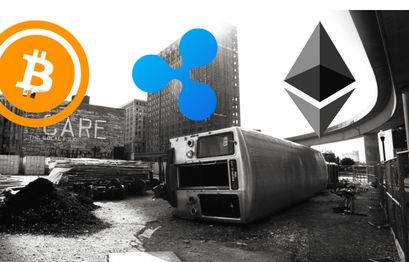In the last section of this series, we covered stablecoin models that utilized the centralized/fiat collateral design, which allowed developers to back coins with physical fiat that were held in a private bank account in order to reduce volatility and provide an alternative to the other assets offered on the market. While this is by far the most popular model, it is not the only model, which brings us to the second part of our four-part stablecoin series, the decentralized/crypto collateral model.
What Is the Decentralized/Crypto Collateral Stablecoin Model?
Unlike the centralized/fiat collateral model, the decentralized/crypto collateral stablecoin model seeks to satisfy the needs of cryptocurrency enthusiasts while also seeking to shield them from some of the instability that comes with using crypto assets by themselves. In a decentralized/crypto collateral stablecoin model, stablecoins are backed by various cryptocurrencies that users must “stake” a certain amount of to attempt to stabilize the price by limiting sell pressures. Once those requirements are met, the mix of cryptocurrencies are locked into a smart contract and the stablecoins are created and sent to the user’s wallet. With this model, users will over-collateralize the stablecoin in order to make sure that it can withstand any price changes. Tokens issued under this model are most likely securities under US laws.
Advantages and Disadvantages to the Decentralized/Crypto Collateral Stablecoin
As with every stablecoin model, there are benefits and drawbacks to the mechanisms used in order to decrease the volatility. In the case of these stablecoins, some of the advantages include:
● Decentralization, which fosters more trust in the stablecoin as well as the protocol and team behind it
● Although risky, it can be efficient due to the fact that it utilizes multiple cryptocurrencies. Using a single cryptocurrency would heighten liquidity risk at times when stability needed to be achieve through selling. The solution allows for any of the cryptocurrencies to be converted into another rather quickly to try to maintain stability.
● Because these stablecoins are linked to the blockchain, everyone who is a user of the coin is able to see every transaction that is made with the asset, improving transparency and accountability.
● Since these assets are over-collateralized, it helps to guard against volatility that often strikes across multiple assets.
Despite some of these intelligently engineered positives, there are some disadvantages to using this type of asset that many are not able to overcome. Here are a few of these notable drawbacks
● There is the obvious problem of volatility with a crypto collateral stablecoin. Even though it is designed to help shield the user from some of the volatility, this model is still more volatile than models backed by fiat or commodities.
● If a cryptocurrency’s value falls below a certain threshold, it will be instantly liquidated, which is a severe issue if this should happen to more than one of the cryptocurrencies backing the stablecoin.
● Utilizing several different cryptocurrencies can often be a complex process for developers, which can result in issues for the user if the project is not carried out correctly.
● They all may classify as securities yet do not register as such. This regulatory oversight on behalf of the issuers shows a lack of seriousness about mass adoption.
Much like the previous model we covered in Part I, the decentralized/crypto collateral model comes with several flaws that make it an undesirable product for those truly seeking a stable coin. In our next section, we will cover the third stablecoin model: the decentralized/no collateral model.








